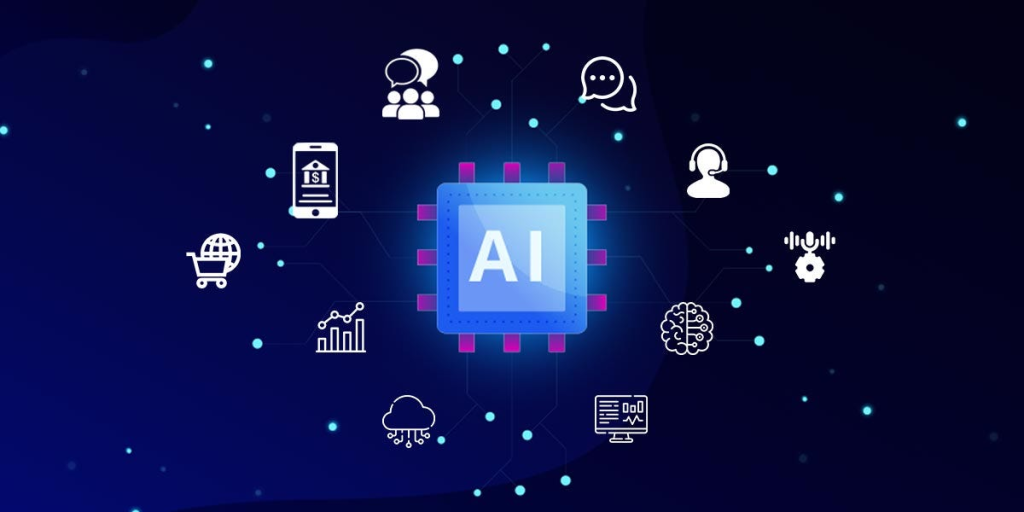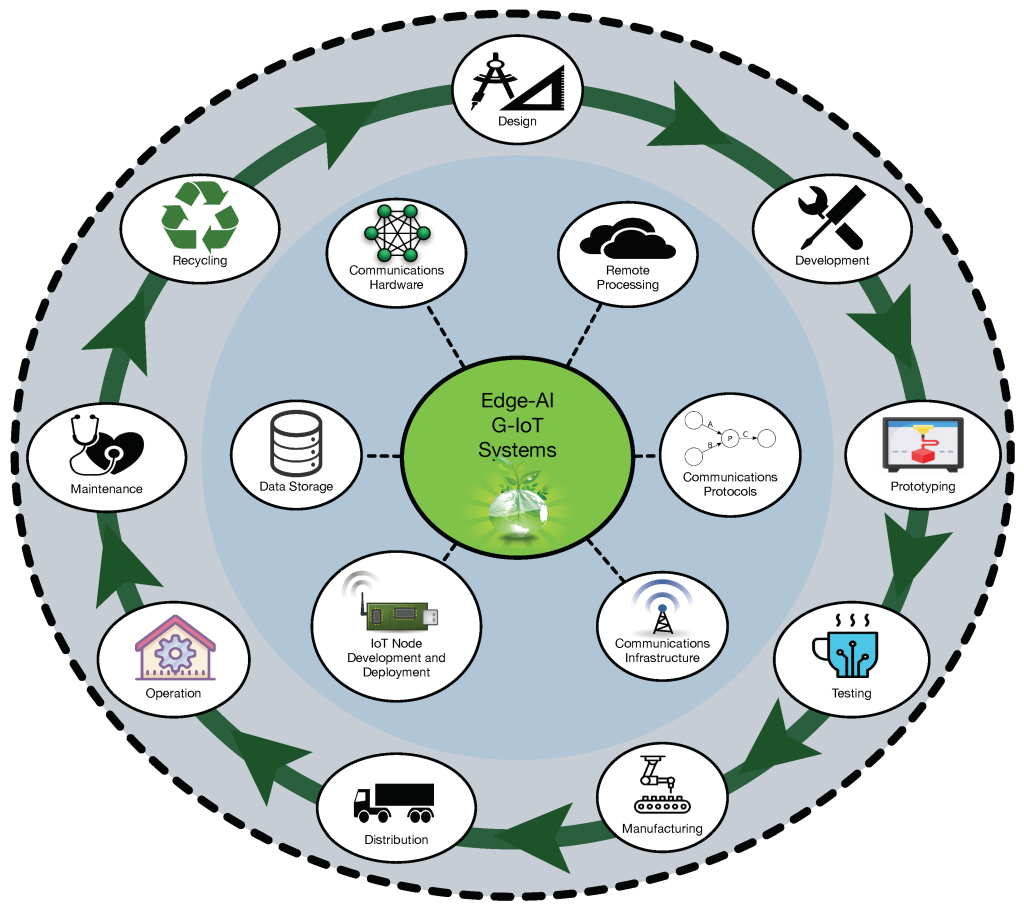
The field of artificial intelligence (AI) is advancing rapidly, leading to the development of new and innovative tools. These cutting-edge AI tools are revolutionizing various industries and pushing the boundaries of what AI can accomplish. Let’s explore some of the next-generation AI tools that are currently making significant progress:
- GPT-3: GPT-3, developed by OpenAI, is a highly advanced language model. It utilizes deep learning techniques to generate human-like text and perform tasks such as language translation, content creation, and contextual question answering. GPT-3 has had a transformative impact on natural language processing (NLP) applications.
- Computer Vision Models: Recent advancements in computer vision have resulted in highly accurate and versatile models. For instance, models like EfficientDet, YOLOv4, and CenterNet have significantly improved object detection and recognition tasks. These models find applications in areas such as autonomous vehicles, surveillance systems, and image analysis.
- Reinforcement Learning: Reinforcement learning (RL) focuses on training algorithms to make decisions based on environmental feedback. Advanced RL techniques, such as Proximal Policy Optimization (PPO) and Soft Actor-Critic (SAC), have achieved remarkable success in complex tasks such as game playing (e.g., AlphaGo and OpenAI Five) and robotic control. RL has promising applications in optimization, robotics, and autonomous systems.
- Deep Reinforcement Learning: Deep reinforcement learning combines deep learning techniques with RL algorithms. This approach has led to breakthroughs in domains such as robotics and game playing. Notable deep reinforcement learning algorithms include DeepMind’s DQN, A3C, and more recent ones like D4PG and SAC-X, which have demonstrated superior performance in complex environments.
- Federated Learning: Federated learning is a distributed approach that enables training models on decentralized data while preserving privacy. It allows multiple devices or organizations to collaborate and learn a shared model without sharing raw data. Federated learning has the potential to revolutionize industries such as healthcare, where privacy concerns are of utmost importance.
- GANs and StyleGAN: Generative Adversarial Networks (GANs) are AI models capable of generating synthetic data that resembles real data. GANs find applications in image synthesis, video generation, and even deepfake creation. StyleGAN, a specific variant of GANs, has gained popularity for generating high-quality images, making it useful in creative fields like graphic design and virtual reality.
- Transfer Learning and Meta-learning: Transfer learning involves leveraging pre-trained models to quickly solve new tasks. It enables the reuse of knowledge learned from one domain to another, reducing the need for large amounts of labeled data. Meta-learning, on the other hand, focuses on training models that can rapidly learn new tasks with minimal data. Both techniques have significant implications for speeding up AI development and deployment.
These cutting-edge AI tools represent just a fraction of the advancements occurring in the field. Ongoing research and technological progress will undoubtedly bring forth even more innovative tools, further pushing the boundaries of what AI can achieve in the future.
Top 10 Cutting-Edge AI Tools name list.
Below is a list of cutting-edge AI tools that are currently leading the field:
- TensorFlow: TensorFlow is a powerful open-source library for machine learning and deep learning. It enables developers to build and deploy AI models across various platforms, providing a wide range of tools and functionalities for tasks like image recognition, natural language processing, and time series analysis.
- PyTorch: PyTorch is a popular deep learning framework known for its dynamic computational graphs and user-friendly interface. It allows researchers and developers to build and train neural networks effectively. PyTorch supports tasks such as image classification, object detection, and language translation.
- Keras: Keras is a high-level neural networks API written in Python. It provides a user-friendly and intuitive interface for building deep learning models. Keras supports multiple backends, such as TensorFlow and Theano, making it versatile for various AI tasks like image recognition, text analysis, and sentiment analysis.
- Caffe: Caffe is a fast and efficient deep learning framework primarily used for computer vision tasks. It excels at tasks like image classification, object detection, and segmentation. Caffe’s optimized GPU usage and expressive architecture make it popular for research and industry applications.
- ONNX: The Open Neural Network Exchange (ONNX) is an open standard for representing deep learning models. It enables interoperability between different AI frameworks, allowing models to be trained in one framework and deployed in another. ONNX simplifies the process of integrating models into production pipelines and facilitates collaboration across multiple tools.
- MXNet: MXNet is a flexible and efficient deep learning framework that supports both symbolic and imperative programming styles. It offers dynamic computational graphs and provides language bindings for Python, R, and Julia. MXNet is suitable for a wide range of AI tasks and supports distributed training for large-scale models.
- Hugging Face Transformers: The Hugging Face Transformers library is a powerful tool for natural language processing (NLP) tasks. It provides pre-trained models and utilities for tasks like text classification, sentiment analysis, question-answering, and language translation. The library’s transformers enable fine-tuning on custom datasets and empower researchers and developers in NLP applications.
- NVIDIA CUDA: CUDA is a parallel computing platform developed by NVIDIA. It allows developers to leverage the power of NVIDIA GPUs for accelerated computation in AI tasks. CUDA provides a programming model and API that enable high-performance GPU-accelerated computing, enhancing the training and inference speed of AI models.
- Microsoft Cognitive Toolkit (CNTK): CNTK is a deep learning framework developed by Microsoft Research. It offers efficient distributed training, flexible model definition, and supports multiple programming languages. CNTK has been used for various AI applications, including speech recognition, image classification, and language understanding.
- OpenAI Gym: OpenAI Gym is a toolkit for developing and benchmarking reinforcement learning algorithms. It provides a collection of environments and an easy-to-use interface for interacting with them. OpenAI Gym enables researchers and developers to experiment with different reinforcement learning algorithms and evaluate their performance in a standardized environment.
These top 10 cutting-edge AI tools encompass a wide range of capabilities, from building and training models to deploying them in various domains like computer vision, natural language processing, and reinforcement learning. Each tool brings unique strengths and features, empowering developers to solve complex AI problems and advance the field.
Benefits of using the Cutting-Edge AI Tools

Using cutting-edge AI tools offers several benefits across different aspects of AI development and deployment. Here are some key advantages:
- Improved Performance: Advanced AI tools incorporate the latest algorithms and techniques, resulting in enhanced performance and accuracy of AI models. These tools leverage state-of-the-art methodologies, leading to better outcomes in tasks such as image recognition, natural language processing, and reinforcement learning.
- Enhanced Efficiency: Cutting-edge AI tools often come with optimized algorithms and libraries that improve the efficiency of AI computations. This translates to faster training and inference times, enabling quicker development and deployment of AI models. Enhanced efficiency allows organizations to handle larger datasets, run more complex models, and achieve real-time or near-real-time performance.
- Increased Productivity: State-of-the-art AI tools typically provide user-friendly interfaces, extensive documentation, and strong community support. These features enhance developer productivity. Developers can leverage pre-built models, frameworks, and libraries, saving time and effort in model development. Researchers can quickly experiment with new ideas and iterate on their models, accelerating the research and development cycle.
- Versatility and Flexibility: Cutting-edge AI tools are designed to be versatile and flexible, accommodating a wide range of use cases and domains. They often support multiple programming languages, are compatible with various hardware platforms, and facilitate interoperability with other tools and frameworks. This flexibility allows developers to adapt the tools to their specific requirements, integrate them into existing systems, and leverage different AI approaches as needed.
- Streamlined Deployment: Advanced AI tools provide streamlined deployment options, simplifying the process of packaging and deploying models. They may offer integration with cloud services, containerization tools, or deployment frameworks, making it easier to deploy AI models in production environments. Streamlined deployment enables organizations to bring AI capabilities to market faster and more efficiently.
- Access to Pre-trained Models and Resources: Many cutting-edge AI tools come with pre-trained models and resources that can be utilized or fine-tuned for specific tasks. These pre-trained models save developers significant time and computational resources, as they have already been trained on large datasets. Developers can use these models as a starting point or benchmark for their projects, expediting development and improving results.
- Future-Proofing: Using cutting-edge AI tools ensures developers stay up-to-date with the latest advancements in AI technology. These tools incorporate the most recent research findings and techniques, enabling developers to utilize the latest methodologies and models in their work. This future-proofing aspect allows organizations to remain competitive in the fast-evolving AI landscape and seize emerging opportunities.
By leveraging cutting-edge AI tools, developers and organizations can build more accurate, efficient, and versatile AI models. These tools enhance productivity, simplify deployment, and provide access to state-of-the-art resources, enabling organizations to harness the full potential of AI technology.






Leave a Reply
You must be logged in to post a comment.